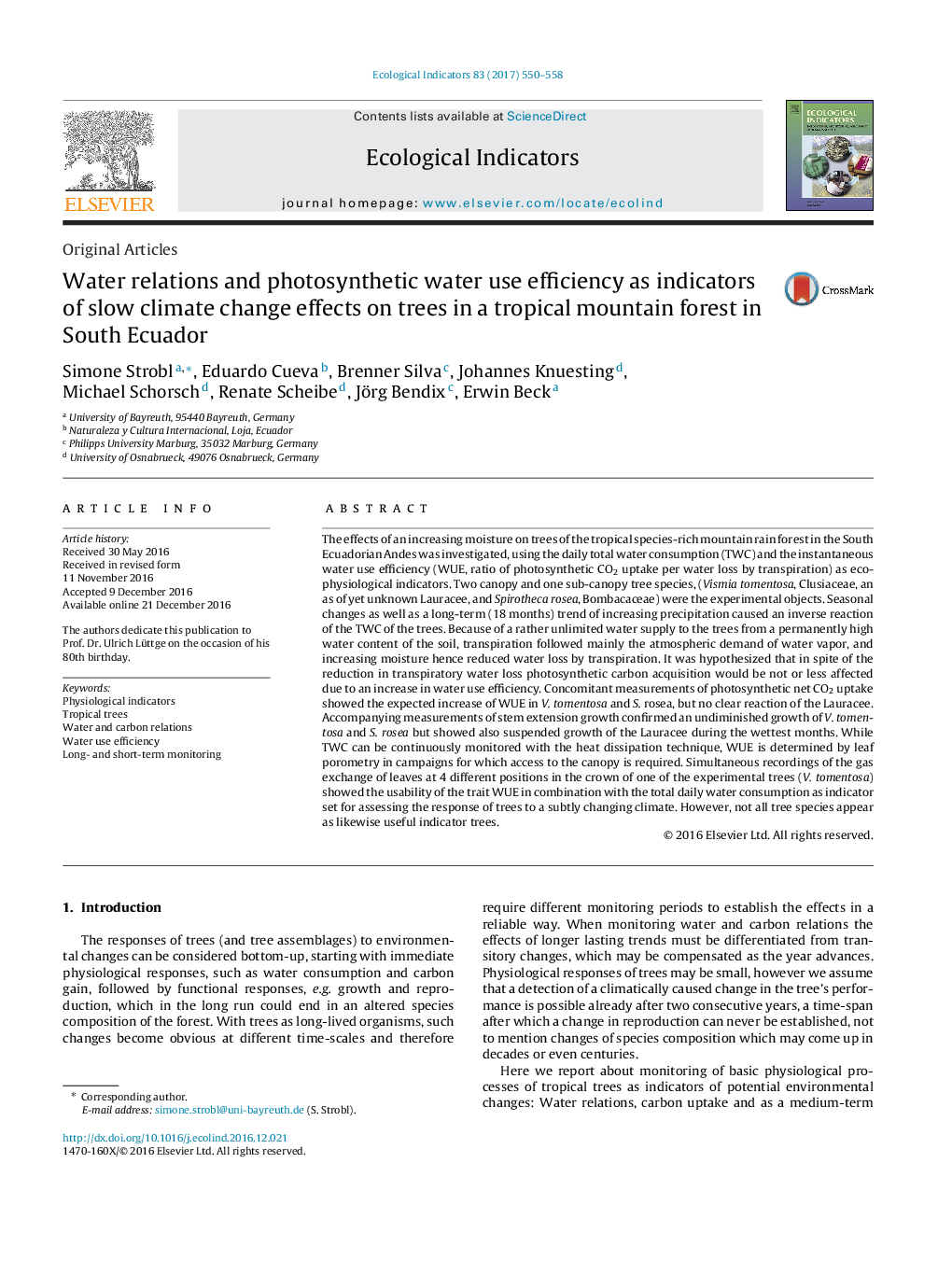| کد مقاله | کد نشریه | سال انتشار | مقاله انگلیسی | نسخه تمام متن |
|---|---|---|---|---|
| 5741470 | 1617119 | 2017 | 9 صفحه PDF | دانلود رایگان |
- Long-term water relations of 3 trees in a tropical mountain rain forest are presented.
- Due to ample soil water availability transpiration follows atmospheric water deficit.
- Whole-day photosynthetic water use efficiency (WUE) is similar in sun and shade leaves.
- Increasing rainfall over 18 months resulted in decreasing total water consumption (TWC).
- TWC combined with WUE proved as indicators of subtle climate change effects.
The effects of an increasing moisture on trees of the tropical species-rich mountain rain forest in the South Ecuadorian Andes was investigated, using the daily total water consumption (TWC) and the instantaneous water use efficiency (WUE, ratio of photosynthetic CO2 uptake per water loss by transpiration) as ecophysiological indicators. Two canopy and one sub-canopy tree species, (Vismia tomentosa, Clusiaceae, an as of yet unknown Lauracee, and Spirotheca rosea, Bombacaceae) were the experimental objects. Seasonal changes as well as a long-term (18 months) trend of increasing precipitation caused an inverse reaction of the TWC of the trees. Because of a rather unlimited water supply to the trees from a permanently high water content of the soil, transpiration followed mainly the atmospheric demand of water vapor, and increasing moisture hence reduced water loss by transpiration. It was hypothesized that in spite of the reduction in transpiratory water loss photosynthetic carbon acquisition would be not or less affected due to an increase in water use efficiency. Concomitant measurements of photosynthetic net CO2 uptake showed the expected increase of WUE in V. tomentosa and S. rosea, but no clear reaction of the Lauracee. Accompanying measurements of stem extension growth confirmed an undiminished growth of V. tomentosa and S. rosea but showed also suspended growth of the Lauracee during the wettest months. While TWC can be continuously monitored with the heat dissipation technique, WUE is determined by leaf porometry in campaigns for which access to the canopy is required. Simultaneous recordings of the gas exchange of leaves at 4 different positions in the crown of one of the experimental trees (V. tomentosa) showed the usability of the trait WUE in combination with the total daily water consumption as indicator set for assessing the response of trees to a subtly changing climate. However, not all tree species appear as likewise useful indicator trees.
Journal: Ecological Indicators - Volume 83, December 2017, Pages 550-558
